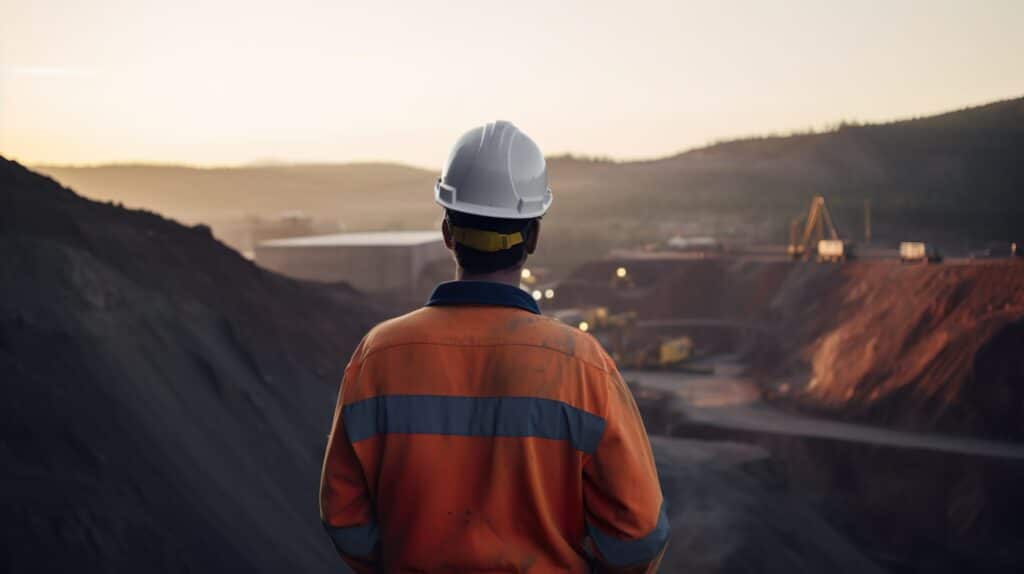A critical, but often overlooked sector of the economy both in the United States and around the world, the mining industry is unique in the strenuous nature of the labor required of workers and the risks faced by those workers. The combination of enclosed workspaces, high-exertion tasks, high dependence on heavy equipment, at times weeks away from home, and workforce characteristics add up to significant injury risks, which are compounded by one common factor facing virtually all work areas in the mining industry: fatigue.

Fatigue’s effects on worker performance and safety are well documented. Defined as a pervasive decline in ability due to a consistent lack of adequate quality sleep, fatigue is especially dangerous in an industry that requires high levels of fitness and focus. Impairment from fatigue is comparable to that experienced from inebriation, with short- and long-term effects including:
-
Decreased alertness and focus
-
Slower reaction time
-
Weakened immune system
-
Cognitive decline/diminished memory and problem-solving abilities
-
Diabetes
-
Obesity
-
Heart disease
-
Increased cancer risk
Fatigued workers are significantly more likely to suffer injuries or cause accidents on the job, which compounds risk for other workers and imposes significant costs on employers. According to a study published in Minerals Engineering, employer costs for common injuries in the mining industry average $820 for a simple ankle sprain, $22,500 for a fractured hand, and $45,000 for a sprained shoulder. These, along with the indirect costs accumulated from lost work days, decreased performance, and turnover, are substantial drains on employer resources that have serious effects on the bottom line.
At the same time, the importance of the mining industry to the wider economy cannot be understated. Though mining workers account for only one-quarter of one percent of the broader U.S. workforce, the industry launches a value chain that adds up to as much as 14 percent of the total national economy. Yet, those same workers also suffer high rates of anxiety, depression, PTSD, diabetes, and musculoskeletal disorders. Fatigue can be found at the root of many of these challenges, and is a direct cause of a disproportionately high number of injuries in the mining industry. For instance, as much as 65 percent of truck haulage injuries at mining facilities can be directly attributed to fatigue. Mining industry data also indicates that fatigue is a factor in up to 40 percent of all accidents. Because of the high reliance on shift work in the mining industry, fatigue, and its associated risks eclipse those of other economic areas, leading to higher injury rates. A review of Australian mining data shows that injury rates for shift workers are more than twice those of non-shift workers.
So what is to be done about fatigue in the mining industry, and how can employers support their workforces with the aim of reducing fatigue and mitigating injury risks? The answer lies in a growing strategy being deployed as part of a holistic workplace safety regimen: Industrial Athlete training.
What is an Industrial Athlete?
Industrial athletes are found in virtually every type of work, from mining to manufacturing, transportation, warehousing, aviation, and beyond. An industrial athlete is any worker whose job responsibilities entail some level of physical exertion, endurance, flexibility, and coordination. Workers in this category face higher risks than other workers, including an increased rate of fatigue as well as higher rates of MSDs.
There is no question that mining industry workers are industrial athletes, and it’s clear why mining workers are at a higher risk of fatigue. Repetitive, monotonous tasks, long work hours, shift work, poor lighting, high temperatures, and loud noises all contribute to the accumulation of fatigue in mining.
What is Industrial Athlete training?
The term “industrial athlete” is used because of the high rates of physical fitness and conditioning achieved by professional athletes. Industrial athlete training aims to incorporate those concepts, along with others from the fields of anatomy, ergonomics, biomechanics, nutrition, sleep science, and physics into a comprehensive regimen for industrial workers. The goal is to develop training programs that target the specific demands of a particular job, meaning that industrial athlete training is tailored directly to the industry, area of work, and tasks of an individual worker.
The desired effect of these programs is a higher level of strength, conditioning, and flexibility pertaining to the specific responsibilities of a given job. Key steps to developing an effective training program include:
- Assessment of specific job duties and their physical requirements
- Biomechanics training to identify and improve strength for key movements, especially those with high injury risks
- Work hardening to improve overall conditioning and aerobic fitness, helping mitigate fatigue
- Personal training that includes sleep coaching and nutrition to ensure employee energy levels are adequate for the responsibilities of the job
How to Augment Industrial Athlete Training with Fatigue Management Solutions
For an industry as critical and high-risk as mining, it’s important to add other fatigue management solutions to industrial athlete training in order to achieve the best results. Systems such as active monitoring software connected to wearable devices, alertness testing, and scanning technology, can provide essential data to inform organizational interventions and administrative controls to help mitigate fatigue levels. Exoskeleton technology designed to boost physical strength and endurance can help workers accomplish strenuous or repetitive tasks with reduced risk of overexertion or repetitive stress injuries. Employers can review scheduling and rostering practices to reduce the need for shift work and consecutive night shifts, alleviating fatigue risks. Finally, new smartphone apps and other software support can be introduced to provide regular reminders to exercise and get proper nutrition and sleep, also helping workers access counseling and mental health support to mitigate the effects of mental health issues on fatigue.
A recent article in Well Water Journal, https://waterwelljournal.com/the-industrial-athlete/, a key component of many mining sites, discusses in great detail examples of an industrial athlete program in action with a drilling contractor, National EWP.
At a recent webinar with safety executives from 16 Canadian Mining companies, DORN CEO, Kevin Lombardo explored the impacts of successful Industrial Athlete Program can have on the mining industry.
Conclusion
While there is no one-size-fits-all solution for fatigue and injury risks in the mining industry, a holistic program of safety support that includes industrial athlete training and other fatigue management protocols can significantly reduce risks and boost employee performance. DORN’s clients in the mining industry have experienced substantial improvements in their safety outcomes after contracting with our providers, reporting a 35% reduction in accidents and a 38% reduction in hours worked with a high or severe fatigue status.
Contact DORN today to learn how we can help your mining operation achieve better safety outcomes.



